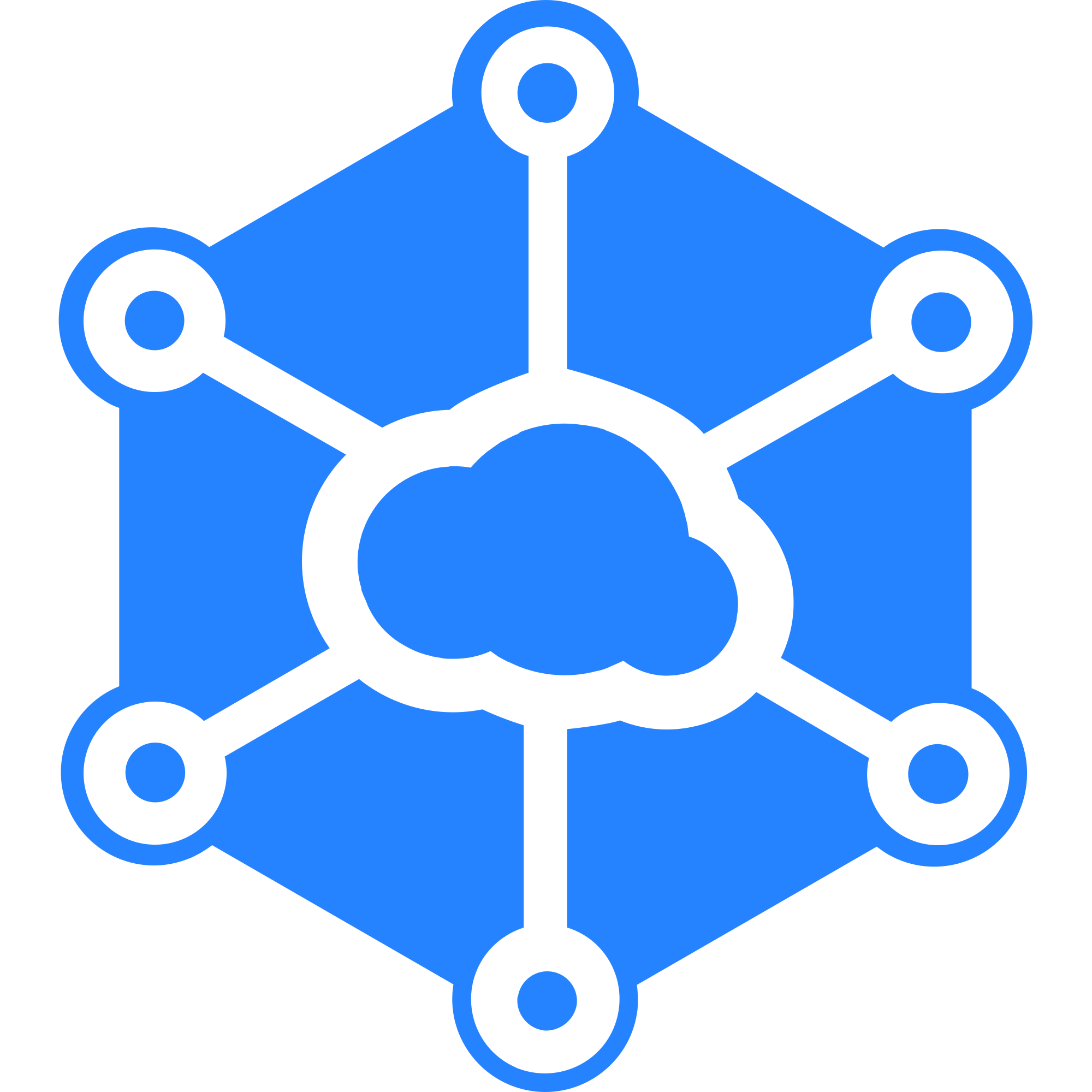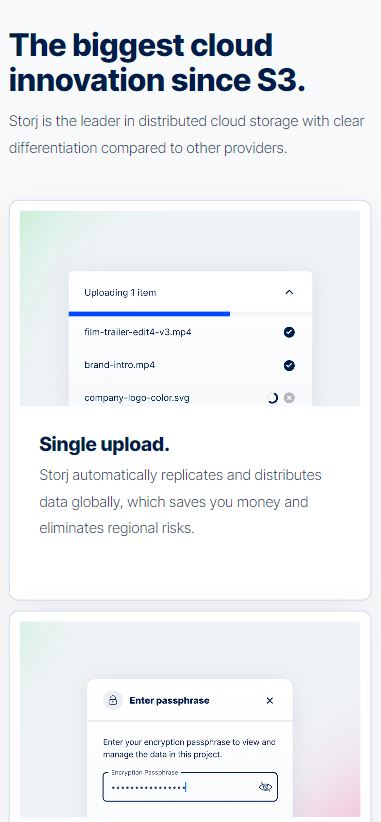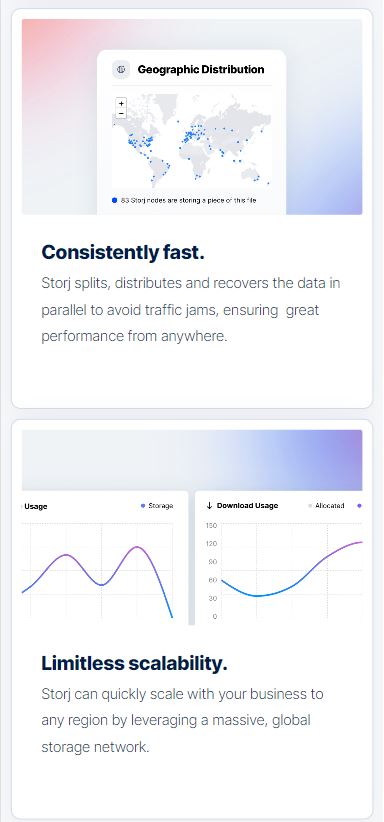About Storj
What is Storj?
Storj (STORJ) is a decentralized cloud storage network that allows developers to store data securely and privately, using a distributed network of independent nodes around the world. Unlike traditional centralized cloud storage services that rely on data centers, Storj operates on a blockchain-based infrastructure where files are broken down into encrypted pieces and stored across a network of nodes. These nodes are operated by individuals or organizations who contribute unused hard drive space and bandwidth. In return, these participants earn STORJ tokens as compensation.
Storj’s decentralized nature offers several key advantages, including enhanced data security, reduced reliance on centralized data centers, and improved privacy for users. It provides a cost-effective and secure alternative for both businesses and individuals seeking cloud storage solutions.
How Does Storj Work?
Storj operates by using its Tardigrade software, which enables the decentralized storage of data. Here’s how the system works:
- File Upload: When a user uploads a file to Storj, it is first encrypted and split into small, secure pieces.
- Distribution to Nodes: These encrypted pieces are distributed across a global network of independent nodes. Each node only stores a small, random piece of the file, ensuring no single node holds the full file.
- Reconstruction: When a user requests the file, the pieces are retrieved from the various nodes, decrypted using the keys, and recompiled into the original file.
- Security and Redundancy: The decentralization of the data ensures that even if some nodes go offline or are compromised, the file can still be reconstructed from the other parts of the network, enhancing the security and reliability of the storage.
Compensation for Node Operators:
- Node operators are compensated with STORJ tokens for providing storage space and bandwidth.
- These operators help store, retrieve, and validate the integrity of the files.
- Storj uses a proof of storage mechanism to ensure data is properly stored and accessible, with node operators earning tokens based on the amount of storage and bandwidth they provide.
What Are the Potential Use Cases for Storj?
Storj offers a range of use cases for individuals, businesses, and developers looking for a decentralized, secure, and cost-effective cloud storage solution:
- Data Privacy and Security: Storj’s decentralized nature and encryption features make it particularly appealing for users who prioritize privacy and security. Sensitive data can be securely stored without the risk of central server breaches.
- Decentralized Cloud Storage for Developers: Developers can use Storj to integrate decentralized cloud storage into their applications, ensuring data storage is secure, scalable, and cost-efficient.
- Business Storage Solutions: Companies looking for secure, distributed storage solutions for backups, archives, or operational data can use Storj to avoid the costs and risks associated with traditional cloud providers.
- Contributing to the Digital Economy: Individuals or organizations with extra storage space can participate in the network as node operators, earning STORJ tokens for contributing to the network.
- Backup Solutions: Users can use Storj as an alternative to traditional backup services, benefiting from lower costs, better redundancy, and increased privacy.
What is the History of Storj?
Storj was conceived in 2014 by Shawn Wilkinson and John Quinn, with the first white paper outlining the concept published in December of that year. The platform was launched in 2018, and the first version of the Storj network went live in 2019 with the introduction of Storj V3.
Since its launch, Storj has attracted attention for its innovative approach to cloud storage, leveraging blockchain technology to create a decentralized solution that contrasts with traditional centralized storage providers like AWS, Google Cloud, and Microsoft Azure.
Storj raised funds during its early years to support development and growth, and it has continued to improve the network, making it more robust and accessible to developers. The network’s transition to V3 in 2019 marked a significant milestone, improving performance and scalability while also adding features like Tardigrade for more secure and efficient storage management.
























Eyad –
good